Yanjun Ma
SDWPF: A Dataset for Spatial Dynamic Wind Power Forecasting Challenge at KDD Cup 2022
Aug 08, 2022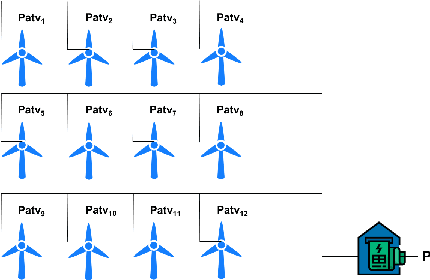

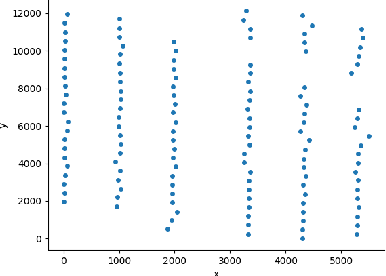
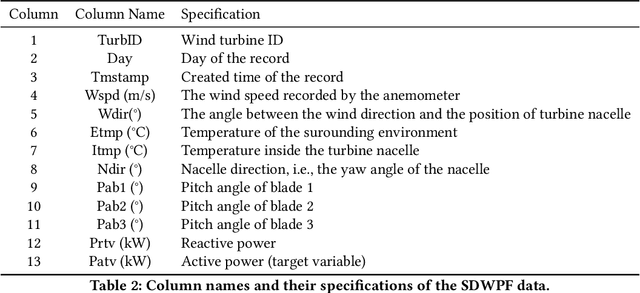
Abstract:The variability of wind power supply can present substantial challenges to incorporating wind power into a grid system. Thus, Wind Power Forecasting (WPF) has been widely recognized as one of the most critical issues in wind power integration and operation. There has been an explosion of studies on wind power forecasting problems in the past decades. Nevertheless, how to well handle the WPF problem is still challenging, since high prediction accuracy is always demanded to ensure grid stability and security of supply. We present a unique Spatial Dynamic Wind Power Forecasting dataset: SDWPF, which includes the spatial distribution of wind turbines, as well as the dynamic context factors. Whereas, most of the existing datasets have only a small number of wind turbines without knowing the locations and context information of wind turbines at a fine-grained time scale. By contrast, SDWPF provides the wind power data of 134 wind turbines from a wind farm over half a year with their relative positions and internal statuses. We use this dataset to launch the Baidu KDD Cup 2022 to examine the limit of current WPF solutions. The dataset is released at https://aistudio.baidu.com/aistudio/competition/detail/152/0/datasets.
HelixFold: An Efficient Implementation of AlphaFold2 using PaddlePaddle
Jul 13, 2022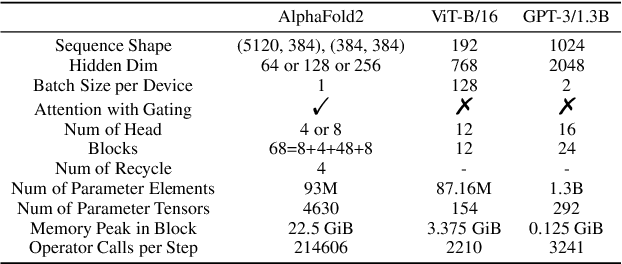
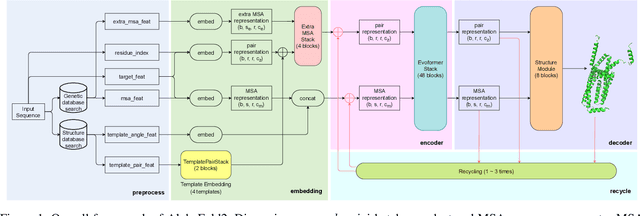

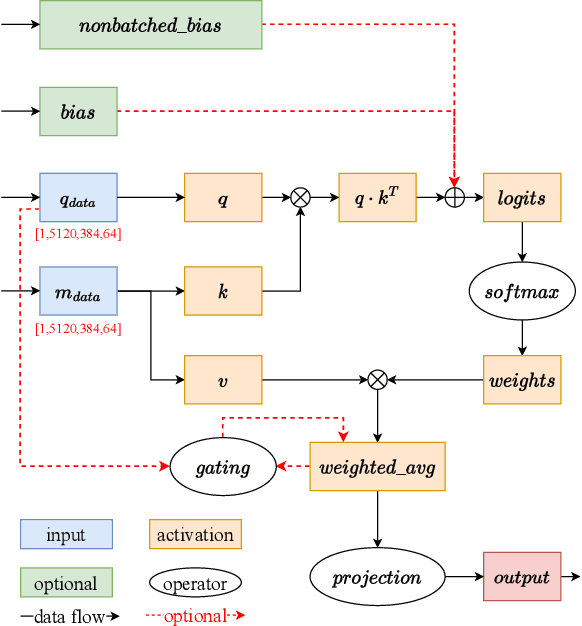
Abstract:Accurate protein structure prediction can significantly accelerate the development of life science. The accuracy of AlphaFold2, a frontier end-to-end structure prediction system, is already close to that of the experimental determination techniques. Due to the complex model architecture and large memory consumption, it requires lots of computational resources and time to implement the training and inference of AlphaFold2 from scratch. The cost of running the original AlphaFold2 is expensive for most individuals and institutions. Therefore, reducing this cost could accelerate the development of life science. We implement AlphaFold2 using PaddlePaddle, namely HelixFold, to improve training and inference speed and reduce memory consumption. The performance is improved by operator fusion, tensor fusion, and hybrid parallelism computation, while the memory is optimized through Recompute, BFloat16, and memory read/write in-place. Compared with the original AlphaFold2 (implemented with Jax) and OpenFold (implemented with PyTorch), HelixFold needs only 7.5 days to complete the full end-to-end training and only 5.3 days when using hybrid parallelism, while both AlphaFold2 and OpenFold take about 11 days. HelixFold saves 1x training time. We verified that HelixFold's accuracy could be on par with AlphaFold2 on the CASP14 and CAMEO datasets. HelixFold's code is available on GitHub for free download: https://github.com/PaddlePaddle/PaddleHelix/tree/dev/apps/protein_folding/helixfold, and we also provide stable web services on https://paddlehelix.baidu.com/app/drug/protein/forecast.
PP-OCRv3: More Attempts for the Improvement of Ultra Lightweight OCR System
Jun 07, 2022

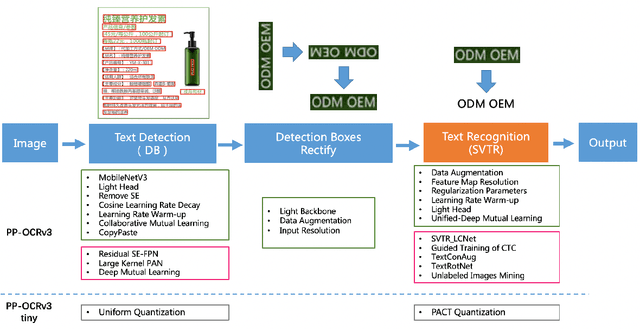

Abstract:Optical character recognition (OCR) technology has been widely used in various scenes, as shown in Figure 1. Designing a practical OCR system is still a meaningful but challenging task. In previous work, considering the efficiency and accuracy, we proposed a practical ultra lightweight OCR system (PP-OCR), and an optimized version PP-OCRv2. In order to further improve the performance of PP-OCRv2, a more robust OCR system PP-OCRv3 is proposed in this paper. PP-OCRv3 upgrades the text detection model and text recognition model in 9 aspects based on PP-OCRv2. For text detector, we introduce a PAN module with large receptive field named LK-PAN, a FPN module with residual attention mechanism named RSE-FPN, and DML distillation strategy. For text recognizer, the base model is replaced from CRNN to SVTR, and we introduce lightweight text recognition network SVTR LCNet, guided training of CTC by attention, data augmentation strategy TextConAug, better pre-trained model by self-supervised TextRotNet, UDML, and UIM to accelerate the model and improve the effect. Experiments on real data show that the hmean of PP-OCRv3 is 5% higher than PP-OCRv2 under comparable inference speed. All the above mentioned models are open-sourced and the code is available in the GitHub repository PaddleOCR which is powered by PaddlePaddle.
PaddleSpeech: An Easy-to-Use All-in-One Speech Toolkit
May 20, 2022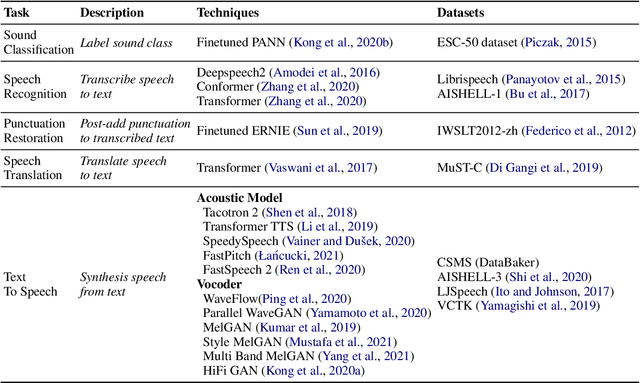
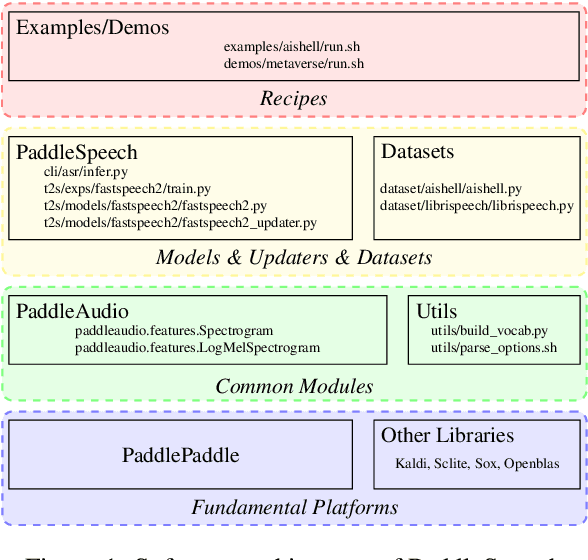
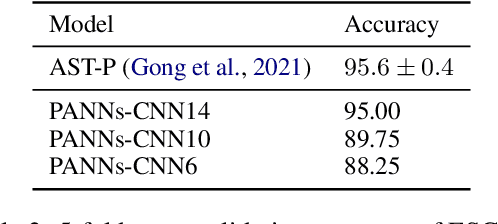
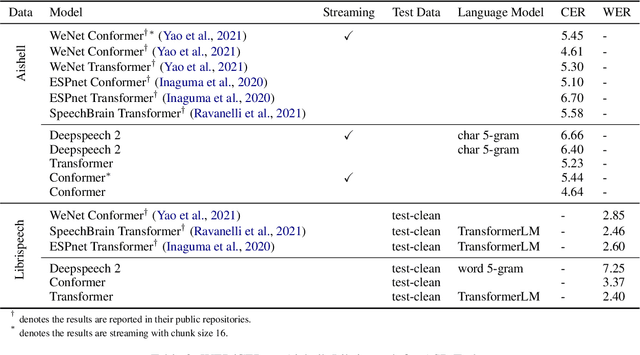
Abstract:PaddleSpeech is an open-source all-in-one speech toolkit. It aims at facilitating the development and research of speech processing technologies by providing an easy-to-use command-line interface and a simple code structure. This paper describes the design philosophy and core architecture of PaddleSpeech to support several essential speech-to-text and text-to-speech tasks. PaddleSpeech achieves competitive or state-of-the-art performance on various speech datasets and implements the most popular methods. It also provides recipes and pretrained models to quickly reproduce the experimental results in this paper. PaddleSpeech is publicly avaiable at https://github.com/PaddlePaddle/PaddleSpeech.
SE-MoE: A Scalable and Efficient Mixture-of-Experts Distributed Training and Inference System
May 20, 2022Abstract:With the increasing diversity of ML infrastructures nowadays, distributed training over heterogeneous computing systems is desired to facilitate the production of big models. Mixture-of-Experts (MoE) models have been proposed to lower the cost of training subject to the overall size of models/data through gating and parallelism in a divide-and-conquer fashion. While DeepSpeed has made efforts in carrying out large-scale MoE training over heterogeneous infrastructures, the efficiency of training and inference could be further improved from several system aspects, including load balancing, communication/computation efficiency, and memory footprint limits. In this work, we present SE-MoE that proposes Elastic MoE training with 2D prefetch and Fusion communication over Hierarchical storage, so as to enjoy efficient parallelisms in various types. For scalable inference in a single node, especially when the model size is larger than GPU memory, SE-MoE forms the CPU-GPU memory jointly into a ring of sections to load the model, and executes the computation tasks across the memory sections in a round-robin manner for efficient inference. We carried out extensive experiments to evaluate SE-MoE, where SE-MoE successfully trains a Unified Feature Optimization (UFO) model with a Sparsely-Gated Mixture-of-Experts model of 12B parameters in 8 days on 48 A100 GPU cards. The comparison against the state-of-the-art shows that SE-MoE outperformed DeepSpeed with 33% higher throughput (tokens per second) in training and 13% higher throughput in inference in general. Particularly, under unbalanced MoE Tasks, e.g., UFO, SE-MoE achieved 64% higher throughput with 18% lower memory footprints. The code of the framework will be released on: https://github.com/PaddlePaddle/Paddle.
Nebula-I: A General Framework for Collaboratively Training Deep Learning Models on Low-Bandwidth Cloud Clusters
May 19, 2022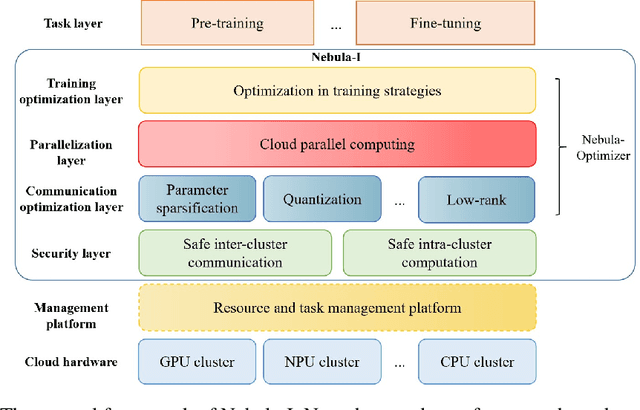

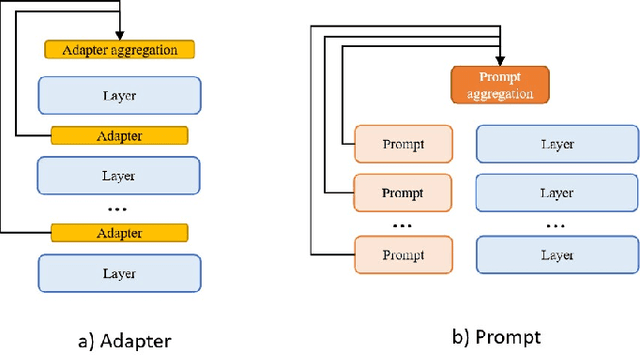

Abstract:The ever-growing model size and scale of compute have attracted increasing interests in training deep learning models over multiple nodes. However, when it comes to training on cloud clusters, especially across remote clusters, huge challenges are faced. In this work, we introduce a general framework, Nebula-I, for collaboratively training deep learning models over remote heterogeneous clusters, the connections between which are low-bandwidth wide area networks (WANs). We took natural language processing (NLP) as an example to show how Nebula-I works in different training phases that include: a) pre-training a multilingual language model using two remote clusters; and b) fine-tuning a machine translation model using knowledge distilled from pre-trained models, which run through the most popular paradigm of recent deep learning. To balance the accuracy and communication efficiency, in Nebula-I, parameter-efficient training strategies, hybrid parallel computing methods and adaptive communication acceleration techniques are jointly applied. Meanwhile, security strategies are employed to guarantee the safety, reliability and privacy in intra-cluster computation and inter-cluster communication. Nebula-I is implemented with the PaddlePaddle deep learning framework, which can support collaborative training over heterogeneous hardware, e.g. GPU and NPU. Experiments demonstrate that the proposed framework could substantially maximize the training efficiency while preserving satisfactory NLP performance. By using Nebula-I, users can run large-scale training tasks over cloud clusters with minimum developments, and the utility of existed large pre-trained models could be further promoted. We also introduced new state-of-the-art results on cross-lingual natural language inference tasks, which are generated based upon a novel learning framework and Nebula-I.
PP-LiteSeg: A Superior Real-Time Semantic Segmentation Model
Apr 06, 2022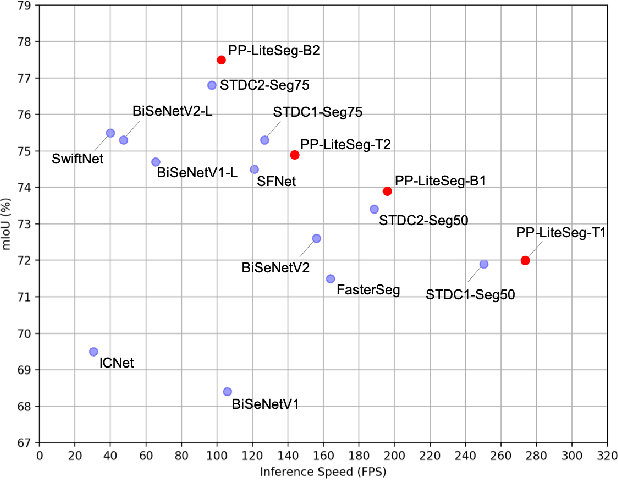

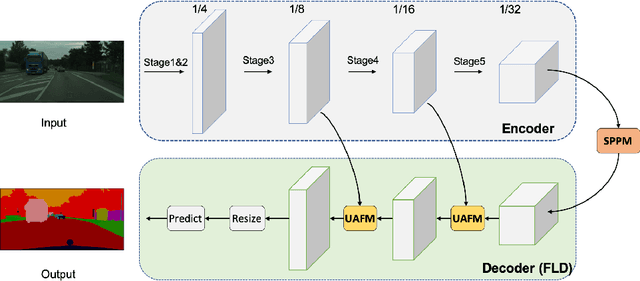
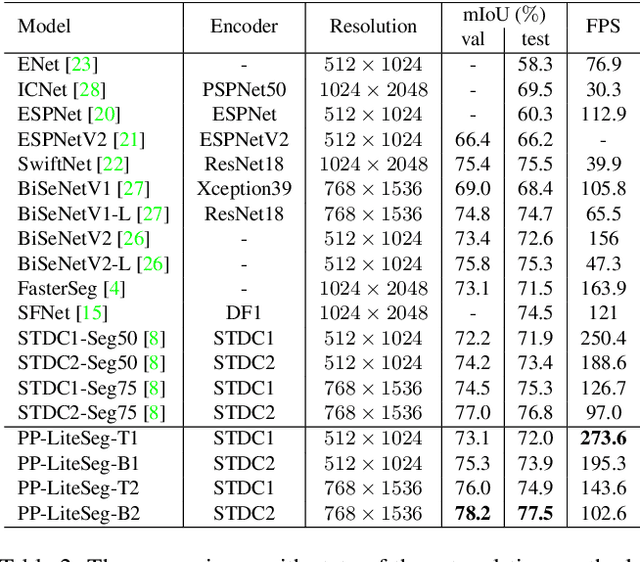
Abstract:Real-world applications have high demands for semantic segmentation methods. Although semantic segmentation has made remarkable leap-forwards with deep learning, the performance of real-time methods is not satisfactory. In this work, we propose PP-LiteSeg, a novel lightweight model for the real-time semantic segmentation task. Specifically, we present a Flexible and Lightweight Decoder (FLD) to reduce computation overhead of previous decoder. To strengthen feature representations, we propose a Unified Attention Fusion Module (UAFM), which takes advantage of spatial and channel attention to produce a weight and then fuses the input features with the weight. Moreover, a Simple Pyramid Pooling Module (SPPM) is proposed to aggregate global context with low computation cost. Extensive evaluations demonstrate that PP-LiteSeg achieves a superior trade-off between accuracy and speed compared to other methods. On the Cityscapes test set, PP-LiteSeg achieves 72.0% mIoU/273.6 FPS and 77.5% mIoU/102.6 FPS on NVIDIA GTX 1080Ti. Source code and models are available at PaddleSeg: https://github.com/PaddlePaddle/PaddleSeg.
ERNIE 3.0 Titan: Exploring Larger-scale Knowledge Enhanced Pre-training for Language Understanding and Generation
Dec 23, 2021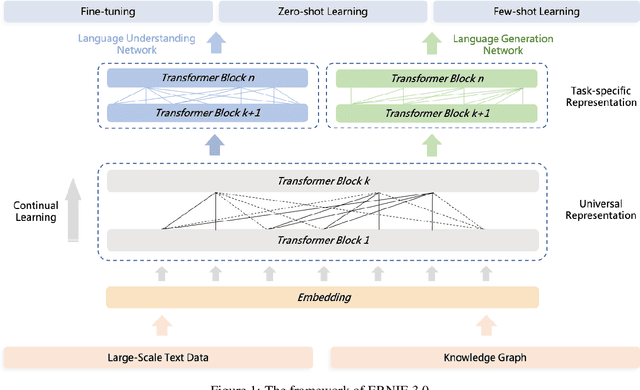

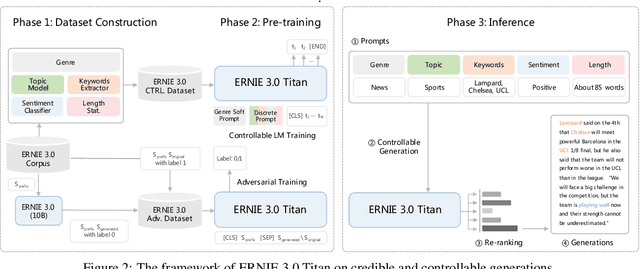
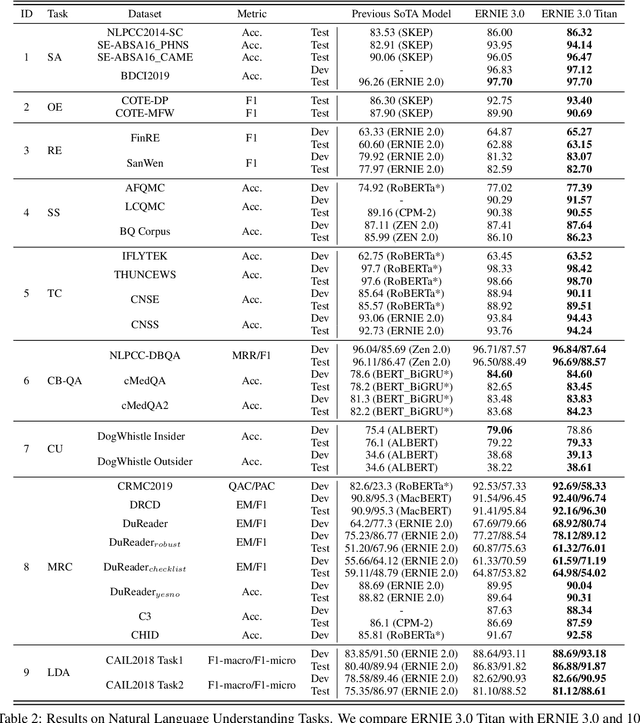
Abstract:Pre-trained language models have achieved state-of-the-art results in various Natural Language Processing (NLP) tasks. GPT-3 has shown that scaling up pre-trained language models can further exploit their enormous potential. A unified framework named ERNIE 3.0 was recently proposed for pre-training large-scale knowledge enhanced models and trained a model with 10 billion parameters. ERNIE 3.0 outperformed the state-of-the-art models on various NLP tasks. In order to explore the performance of scaling up ERNIE 3.0, we train a hundred-billion-parameter model called ERNIE 3.0 Titan with up to 260 billion parameters on the PaddlePaddle platform. Furthermore, we design a self-supervised adversarial loss and a controllable language modeling loss to make ERNIE 3.0 Titan generate credible and controllable texts. To reduce the computation overhead and carbon emission, we propose an online distillation framework for ERNIE 3.0 Titan, where the teacher model will teach students and train itself simultaneously. ERNIE 3.0 Titan is the largest Chinese dense pre-trained model so far. Empirical results show that the ERNIE 3.0 Titan outperforms the state-of-the-art models on 68 NLP datasets.
End-to-end Adaptive Distributed Training on PaddlePaddle
Dec 06, 2021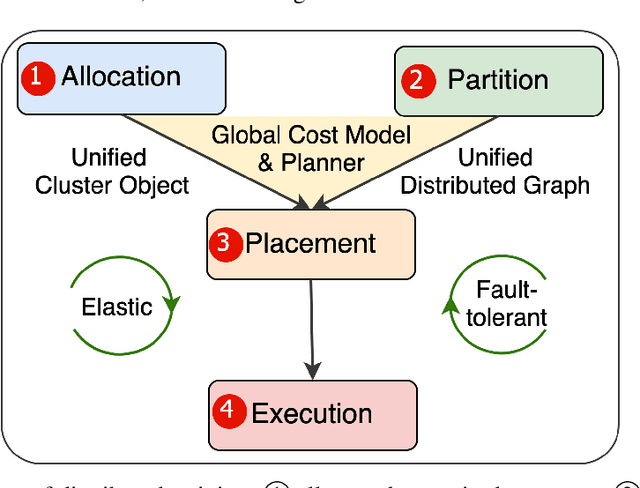

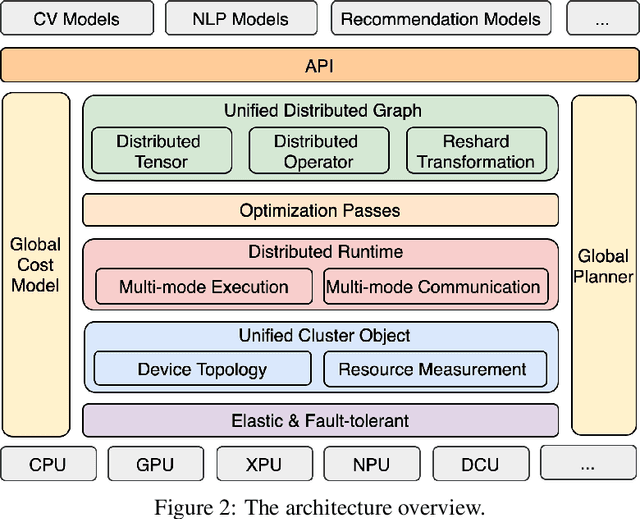

Abstract:Distributed training has become a pervasive and effective approach for training a large neural network (NN) model with processing massive data. However, it is very challenging to satisfy requirements from various NN models, diverse computing resources, and their dynamic changes during a training job. In this study, we design our distributed training framework in a systematic end-to-end view to provide the built-in adaptive ability for different scenarios, especially for industrial applications and production environments, by fully considering resource allocation, model partition, task placement, and distributed execution. Based on the unified distributed graph and the unified cluster object, our adaptive framework is equipped with a global cost model and a global planner, which can enable arbitrary parallelism, resource-aware placement, multi-mode execution, fault-tolerant, and elastic distributed training. The experiments demonstrate that our framework can satisfy various requirements from the diversity of applications and the heterogeneity of resources with highly competitive performance. The ERNIE language model with 260 billion parameters is efficiently trained on thousands of AI processors with 91.7% weak scalability. The throughput of the model from the recommender system by employing the heterogeneous pipeline asynchronous execution can be increased up to 2.1 times and 3.3 times that of the GPU-only and CPU-only training respectively. Moreover, the fault-tolerant and elastic distributed training have been successfully applied to the online industrial applications, which give a reduction of 34.49% in the number of failed long-term training jobs and an increase of 33.91% for the global scheduling efficiency in the production environment.
HeterPS: Distributed Deep Learning With Reinforcement Learning Based Scheduling in Heterogeneous Environments
Nov 20, 2021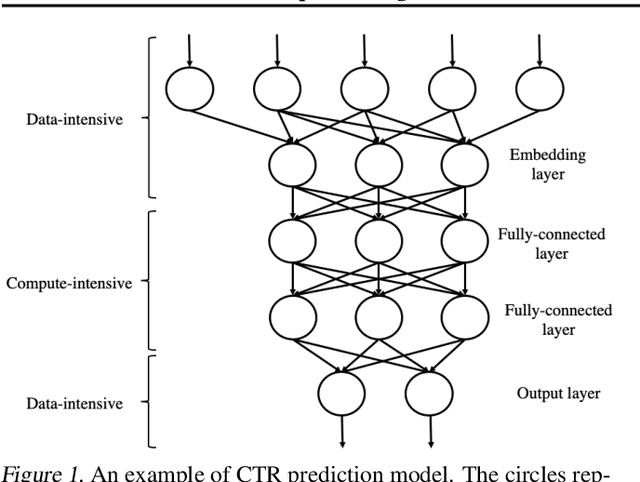
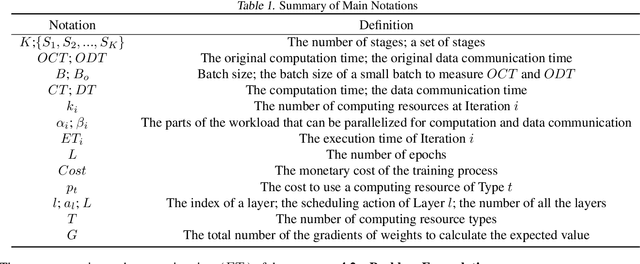


Abstract:Deep neural networks (DNNs) exploit many layers and a large number of parameters to achieve excellent performance. The training process of DNN models generally handles large-scale input data with many sparse features, which incurs high Input/Output (IO) cost, while some layers are compute-intensive. The training process generally exploits distributed computing resources to reduce training time. In addition, heterogeneous computing resources, e.g., CPUs, GPUs of multiple types, are available for the distributed training process. Thus, the scheduling of multiple layers to diverse computing resources is critical for the training process. To efficiently train a DNN model using the heterogeneous computing resources, we propose a distributed framework, i.e., Paddle-Heterogeneous Parameter Server (Paddle-HeterPS), composed of a distributed architecture and a Reinforcement Learning (RL)-based scheduling method. The advantages of Paddle-HeterPS are three-fold compared with existing frameworks. First, Paddle-HeterPS enables efficient training process of diverse workloads with heterogeneous computing resources. Second, Paddle-HeterPS exploits an RL-based method to efficiently schedule the workload of each layer to appropriate computing resources to minimize the cost while satisfying throughput constraints. Third, Paddle-HeterPS manages data storage and data communication among distributed computing resources. We carry out extensive experiments to show that Paddle-HeterPS significantly outperforms state-of-the-art approaches in terms of throughput (14.5 times higher) and monetary cost (312.3% smaller). The codes of the framework are publicly available at: https://github.com/PaddlePaddle/Paddle.
 Add to Chrome
Add to Chrome Add to Firefox
Add to Firefox Add to Edge
Add to Edge